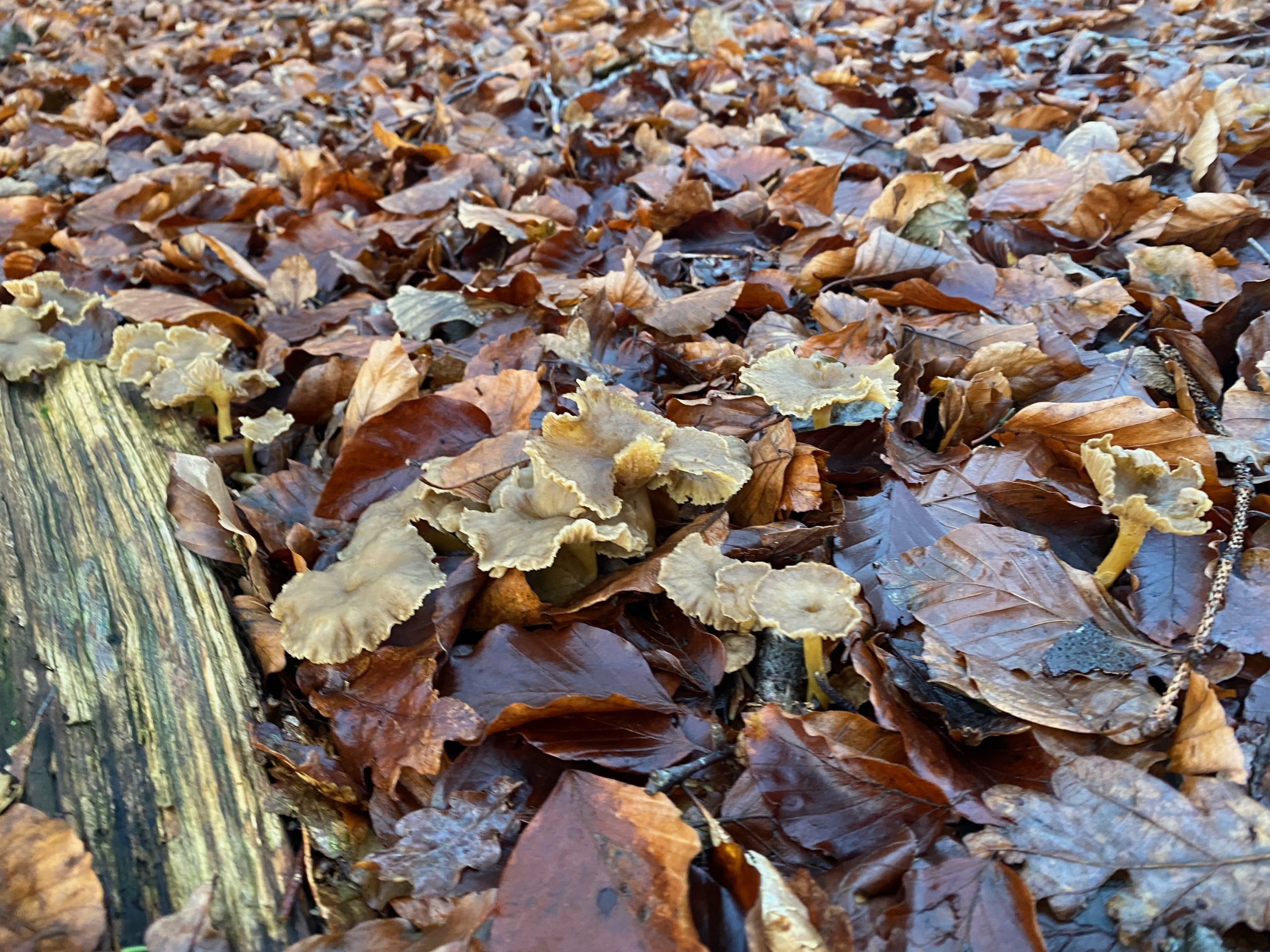”For me, December & January is a time to find winter chanterelles. These golden legged mycorrhizal mushrooms are a fantastic find with their earthy & peppery flavours. Tips & techniques include fermented, pickled, breaded with garlic butter & cooked over fire.
GeorgeFlavour Fred
WHY I LOVE WINTER CHANTERELLES (Cantharellus tubaeformis)
Foraging for mushrooms is fantastic and opens your mind to the nature that is all around us. It is also an opportunity to see how different mushrooms grow and how they interrelate. Winter chanterelles are one of my favourites for a number of reasons.
Identifying them is straightforward (please use as many guides as possible) and they also have few insects and bugs within so can often be consumed straight away. I often eat them raw as it is one of few wild mushrooms where this is possible.
INDENTIFICATION*
The best location to find them is around beech and pine trees (rarely under oak) and preserving them is key as they are very often plentiful.
Looking is tough as the woodland floor turns from a mixture of brown to a mosaic of fallen leaves, brown trumpet caps with their golden stems on this tasty mushroom.
I find them in December and January and this member of the Cantharellus genus, is easily identifiable and home to many choice edible mushrooms. where most have wrinkled ridges rather than gills or tubes.

COOKING AND PRESERVATION
- Fresh: – used in many dishes fresh this deep hit is very welcome in a huge number of dishes. Here I bread them like the 80’s classic breaded mushrooms and cooked over fire at Oren London
- Freezing: – Here is where I will make a pie mix or filling that can be frozen and used at a later date
- Preservation: 2 methods including a simple white wine pickle with aromatics; and brining to ferment the mushrooms that will maximise the probiotics that your micro-biome will love you for.

BRINING —> FERMENTATION




